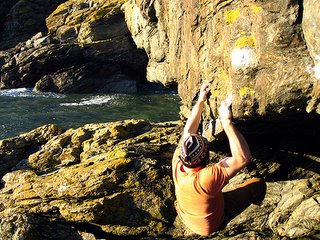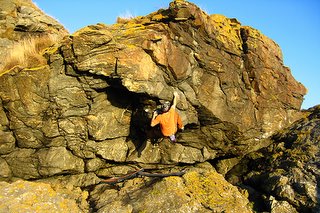
Some winter afternoons in Scotland repay persistence. Driving around lost in a warren of roads and dead-end villages. A rumour of fine new rock , good landings, perfect sea-swirl schist, veins of gold movement...

Tim Rankin has been extending the Aberdeen bouldering scene south along the sea cliffs of Portlethen, adding about 40 problems and his hardest to date at about V11.

Unsure of the precise location, I kept bashing along the coves and platforms until it became obvious where the bouldering was to be had - sun-drenched walls of gold-quartzed schist, solitude and a breathing ocean. With the sun sinking like a slow flare, I pitched the mats and got cranking on a big boulder. The rest was a blur of movement and failure and occasionally success.
Tim Rankin has been extending the Aberdeen bouldering scene south along the sea cliffs of Portlethen, adding about 40 problems and his hardest to date at about V11.


